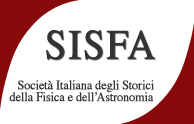Speaker
Description
In an interview with Thomas Kuhn, Léon Rosenfeld commented that his oft-cited 1933 paper with Bohr on the measurability of the electromagnetic field was like Klopstock's Messiah: everyone seemed to agree that it was a masterpiece, but few were actually reading it. The situation, quite perplexingly, persists to this day, even if we include philosophers and historians of physics. This paper with Rosenfeld did not just represent a remarkable moment of crystallization for Bohr's ideas on what it actually means to perform a measurement in the context of the nascent quantum theory of fields. Even if further developments of such reflections were interrupted first by the Einstein-Podolski-Rosen challenge and then by the war, Bohr and Rosenfeld later went back to them, in the wake of the formulation of the new quantum electrodynamics. That is the moment in which, as I will describe in this talk, John Wheeler engaged with their work, first offering to the community an appreciated summary of their claims, and then trying to apply similar considerations, mutatis mutandis, to the case of the gravitational field. By highlighting analogies and, more importantly, disanalogies, Wheeler was unawarely following the steps of Matvei Bronstein, who, in the 1930s, at the instigation of Lev Landau, had performed a similar operation - without much of a following, though, also due to his tragic personal circumstances. By the early/mid-1950s, however, the times were ripe for such considerations to bear fruit and Wheeler, as I will document, made use of them in fostering the "renaissance of general relativity".

